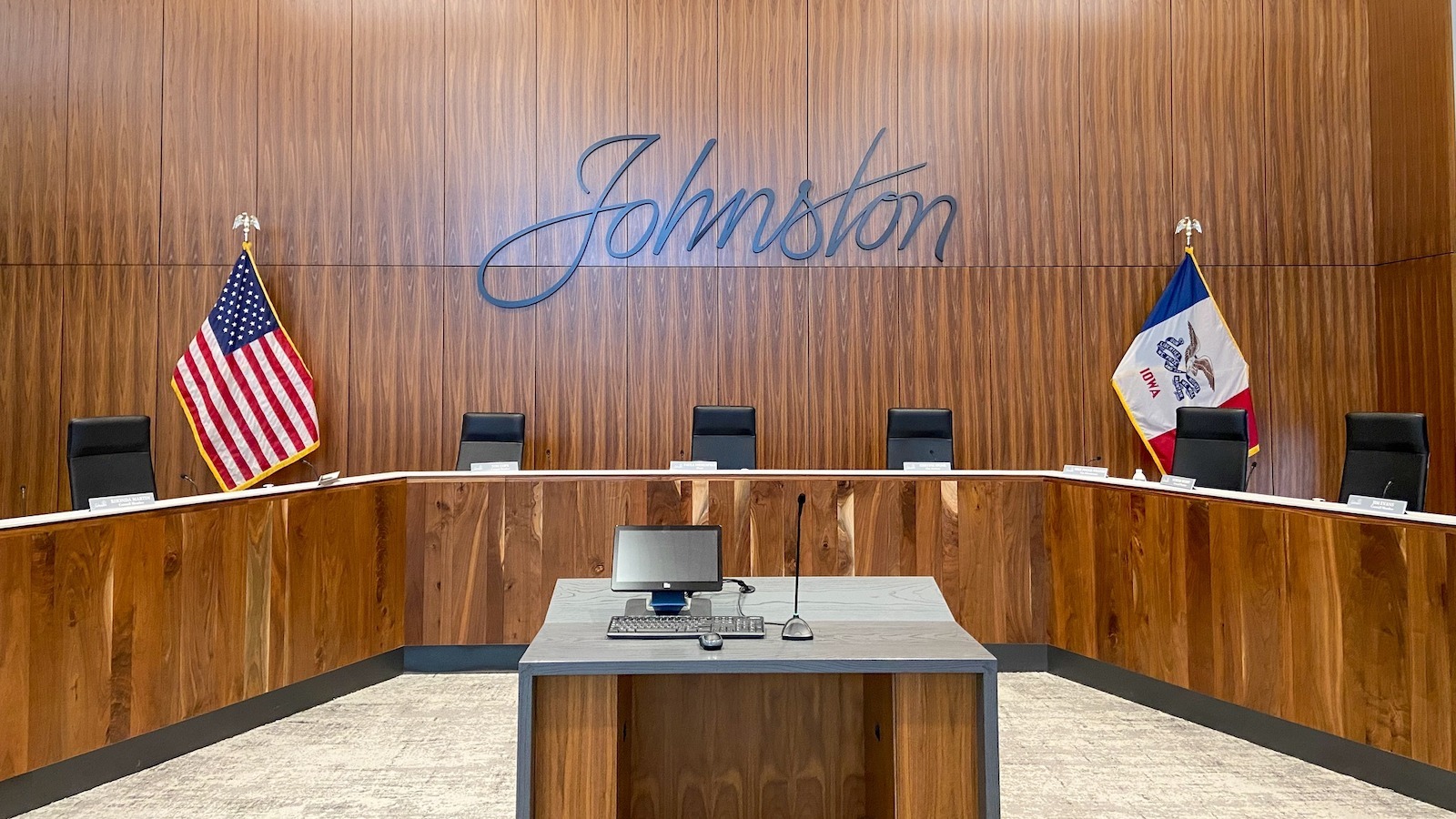Johnston Council | Johnston city facebook https://www.facebook.com/cityofjohnstoniowa/posts/pfbid02LwS7sp1nEm8LjFNxVdaxKkUKwwvmVCQ1xqwtdyrQttRgvRBQXy6BeVmuJRjVAKrYl?__tn__=%2CO*F
Johnston Council | Johnston city facebook https://www.facebook.com/cityofjohnstoniowa/posts/pfbid02LwS7sp1nEm8LjFNxVdaxKkUKwwvmVCQ1xqwtdyrQttRgvRBQXy6BeVmuJRjVAKrYl?__tn__=%2CO*F
The Johnston City Council discussed the possibility of overhauling the city's code for subdivisions during the board's March 6 meeting.
City staff, members of the planning committee and the council have been in discussions about subdivision zoning codes for almost 2 years now, and after finalizing the city's "Thrive 2040" plans, officials said the city needed a complete redo of the subdivision zoning book, to better serve those plans, as well as updating and clarifying its technology and construction methods to make them easier to read and implement. As a part of this process, the board reviewed all the plans for their Planned Development Units (PDUs) and found they could have been aligned to a common zoning structure rather than making an individual zoning plan each time. It has been almost 50 years since the city did a real overhaul of the code, the council noted.
Community Development director David Wilwerding spoke to the board, giving some background on the project. He said the city had worked with a consultant and published a full draft of the code in December, then opened it up for review and public input. It was sent out in utility bills, newspaper articles, social media posts and advertised at city hall. The public forum was open through the end of January, and the city received almost 100 comments on the document which was viewed more than 1,700 times. The planning and zoning commissions made a final review of the draft in February in light of the comments, making some small changes to some requirements for glass in areas, and recommended that the city approve the changes and adopt the new code, Wilwerding said.
"One of the things that it did not cover probably very well and I gave my presentation, then I'll pull up from the actual draft code that's brand new," Wilwerding said. "And this code that is not in our current code, is this whole this whole chapter related to accessory use specific standards. So our current code, there are accessory dwelling units are permitted. They are permitted by special use permit. There are no guidelines in our code at all as to what you might review or what conditions that the board of adjustment might apply other than our general, if they're looking at a special use permit, here's the general requirements. There's nothing specific to an ABU. And so, one of the new things that we've built into the code are there are a lot of uses that from an administrative perspective can be reviewed and we can make sure that they meet these requirements, whatever they might be."
Wilwerding said there hadn't been a lot of major changes to the code, although there might be different requirements and allowances moving forward. The city focused on categorizing their residential properties as single-family, multi-family, PDUs, rural or urban, and made the zoning fit those categories in terms of setbacks, accessory structures and construction additions, he said. They followed a similar method for commercial areas, which face more regulation, Wilwerding said. Residents can still ask for exemptions and special use permits under the new code. The council heard public input, and then approved the first reading of the code.



 Alerts Sign-up
Alerts Sign-up